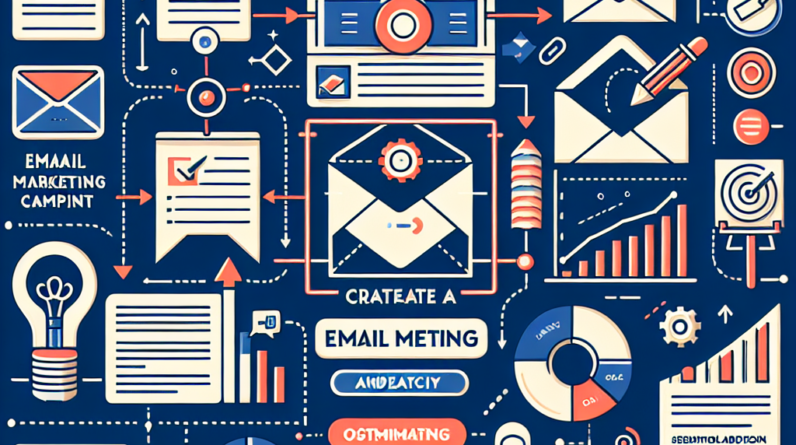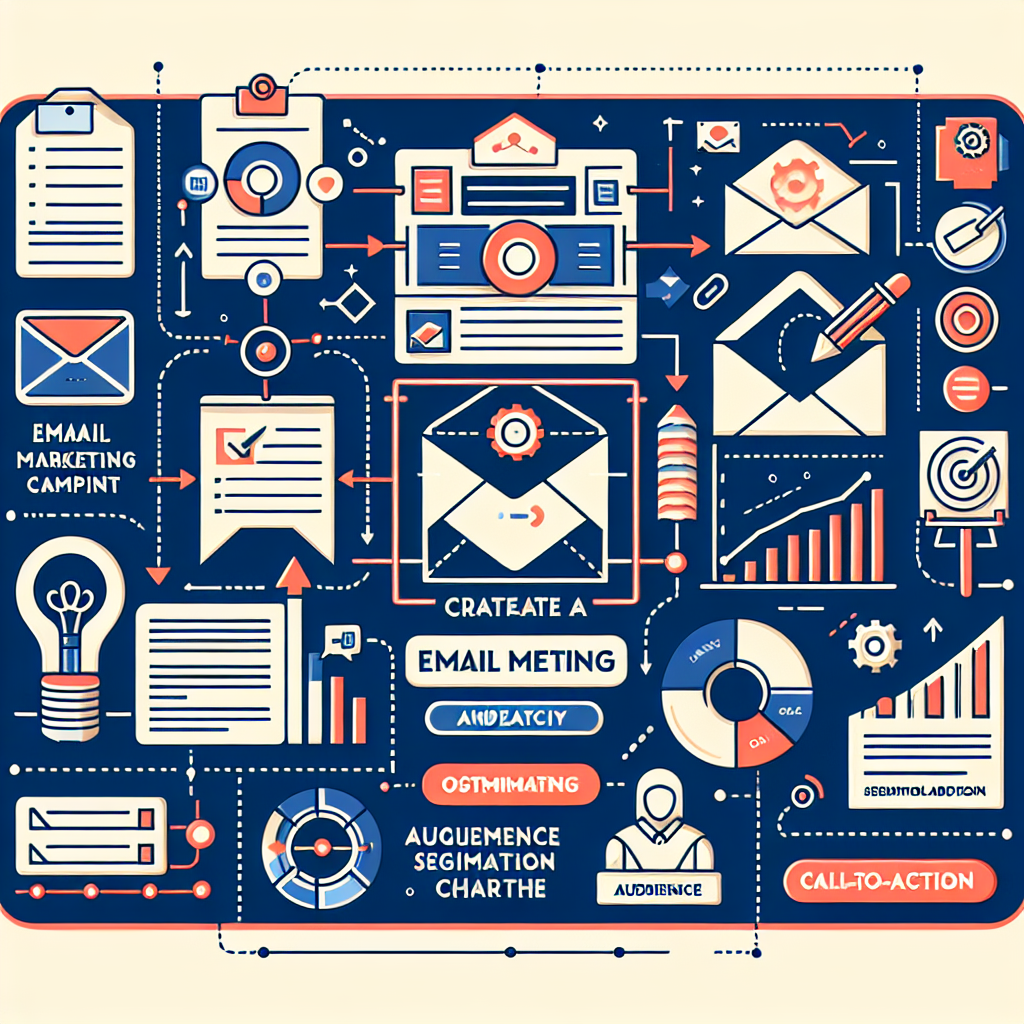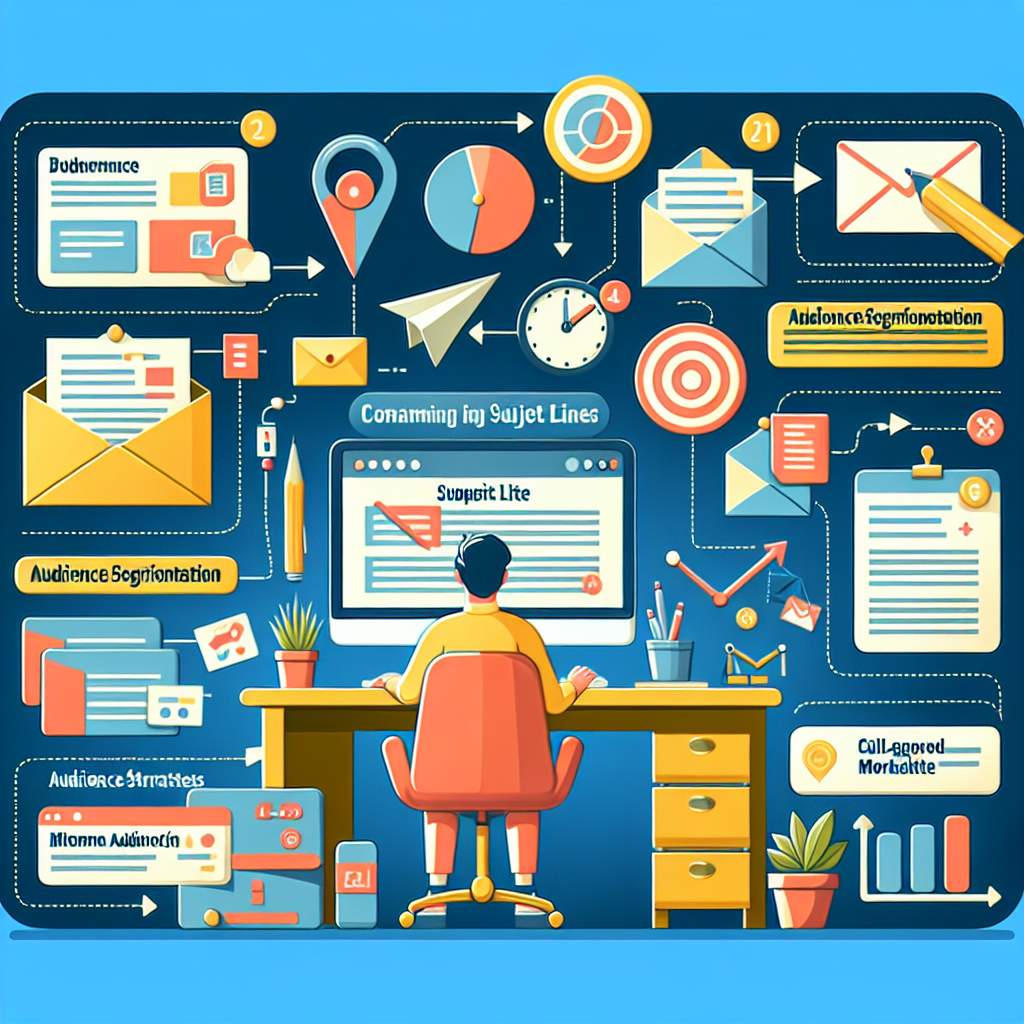
In today’s digital age, email marketing has become an essential strategy for businesses looking to promote their products and services. But what exactly are the key elements that make an email marketing campaign successful? From catchy subject lines to personalized content, this article explores the essential components that can elevate your email campaign and help drive your advertising efforts to new heights. So, if you’re eager to learn how to craft compelling emails that captivate your audience and boost your advertising reach, read on to discover the secrets behind a successful email marketing campaign.

Target Audience
For any successful email marketing campaign, understanding your target audience is crucial. By segmenting your audience, you can create more personalized and targeted email content that resonates with them. This allows you to tailor your messages specifically to their needs, preferences, and behaviors. Whether you define your segments based on demographics, interests, or past purchase history, segmentation helps you ensure that the right message reaches the right people.
Personalization
Once you have segmented your audience, personalization is the next key element to consider in your email marketing campaign. Personalization goes beyond simply addressing each recipient by their name. It involves crafting emails that speak directly to their individual interests, needs, and pain points. By using past purchase history, browsing activity, or survey responses, you can customize your emails to make them more relevant and personalized. This creates a personalized experience for your audience, leading to higher engagement and conversion rates.
Email List Building
Building an email list is the foundation of any successful email marketing campaign. There are various strategies to grow your email list, but two key elements are opt-in forms and lead magnets.
Opt-In Forms
Opt-in forms are essential for capturing email addresses from website visitors. Place these forms strategically on your website to maximize visibility and encourage visitors to sign up. Make sure the form is easy to fill out, and consider offering incentives such as a discount or exclusive content to motivate visitors to provide their email addresses.
Lead Magnets
Lead magnets are valuable resources that you offer to your audience in exchange for their email addresses. These can be e-books, guides, templates, or exclusive content that provides value and solves a problem for your target audience. By offering a lead magnet, you can attract potential subscribers and entice them to join your email list.
Compelling Subject Lines
Subject lines play a critical role in determining whether your email gets opened or ignored. A compelling subject line captures the recipient’s attention and entices them to open the email. Two important elements to focus on when crafting subject lines are relevance and curiosity.
Relevance
Make sure your subject line is directly related to the content of the email. It should align with the recipient’s expectations and convey the value they will receive by opening the email. A relevant subject line increases the chances of your email being opened and read.
Curiosity
Another effective approach is to pique the recipient’s curiosity with your subject line. Tease them with a compelling question or an intriguing statement that leaves them wanting to know more. Curiosity-driven subject lines can create a sense of anticipation and increase open rates.
Urgency
Adding a sense of urgency to your subject lines can also boost open rates. By using time-limited offers or limited stock notifications, you create a sense of FOMO (fear of missing out) and encourage recipients to open your email immediately.

Engaging Content
Once your emails are opened, you need to ensure that the content inside is engaging enough to keep the reader interested. There are two key elements to focus on when creating engaging email content: clarity and compelling copywriting.
Clear and Concise
Your email content should be clear, concise, and easily scannable. Use short paragraphs, bullet points, and subheadings to break up the text and make it easier for readers to digest the information. Clearly communicate the main purpose of your email and provide value to the reader.
Compelling Copywriting
Great copywriting is crucial in capturing your audience’s attention and driving them to take action. Use persuasive language, tell a story, or highlight the benefits of your product or service. Write in a conversational tone to make your emails more relatable and engaging for the reader.
Eye-catching Graphics
Incorporating eye-catching graphics such as images, GIFs, or videos can significantly enhance the visual appeal of your emails. Visual content not only breaks up the text but also helps convey your message more effectively. However, make sure the visuals are relevant, high-quality, and do not overshadow the text.
Call-to-Action (CTA)
A strong call-to-action (CTA) is essential to guide your readers towards the desired action. Two important elements to consider when creating effective CTAs are clarity and visible placement.
Clear and Direct
Your CTA should clearly state what action you want the reader to take. Use actionable language and create a sense of urgency to motivate them to act. Make sure the CTA stands out from the rest of the email content and is easy to spot.
Visible Placement
Place your CTA strategically within your email to maximize its visibility. Ideally, it should be placed above the fold and be easily recognizable. Consider using contrasting colors, larger fonts, or buttons to draw attention to the CTA and make it stand out.
Mobile Optimization
With the increasing use of mobile devices, optimizing your emails for mobile is crucial. Three key elements to focus on when it comes to mobile optimization are responsive design, shorter subject lines, and thumb-friendly buttons.
Responsive Design
Ensure that your email templates are responsive and adjust automatically to different screen sizes. This allows your emails to be easily readable and visually appealing on both desktop and mobile devices. Test your emails across various mobile devices and email clients to verify their responsiveness.
Shorter Subject Lines
Mobile users tend to scan subject lines quickly on their devices. Therefore, it is important to keep your subject lines shorter to ensure they are fully visible. Aim for subject lines that are no longer than 50 characters to maximize their impact and avoid truncation.
Thumb-friendly Buttons
Make sure the buttons in your emails are large enough and easy to tap with a thumb. Mobile users prefer using their thumbs to interact with content, so ensure that buttons are adequately sized and spaced to prevent accidental clicks and frustration.
Email Automation
Email automation allows you to send targeted emails to your subscribers at the right time without manual intervention. Three key elements of email automation include a welcome series, abandoned cart emails, and drip campaigns.
Welcome Series
A welcome series is a series of automated emails sent to new subscribers to introduce your brand, provide valuable information, and nurture the relationship. Craft a sequence of emails that gradually educates and engages new subscribers, guiding them towards taking further action.
Abandoned Cart Emails
Abandoned cart emails are automated emails sent to users who have added items to their carts but did not complete the purchase. These emails remind users of the items they left behind and offer incentives or discounts to encourage them to complete the purchase. Abandoned cart emails have proven to be highly effective in recovering lost sales.
Drip Campaigns
Drip campaigns are a series of automated emails sent to subscribers over a set period or triggered by specific actions. These campaigns allow you to nurture leads, provide targeted content, and move subscribers through the customer journey. Set up a series of emails that align with your subscribers’ interests and actions to keep them engaged and increase conversion rates.
Testing and Analytics
Testing and analyzing your email campaigns are essential to understand their effectiveness and make data-driven improvements. Three key elements to focus on are A/B testing, click-through rates, and conversion tracking.
A/B Testing
A/B testing involves creating two versions of an email and testing them against each other to identify the version with the highest engagement or conversion rate. Test different elements such as subject lines, CTAs, visuals, or email copy to understand what resonates best with your audience. Use the insights from A/B testing to improve future email campaigns.
Click-through Rates
Click-through rates (CTRs) indicate the percentage of recipients who clicked on a link within your email. CTRs help you assess the effectiveness of your CTAs, content placement, and overall engagement. Monitor your CTRs regularly and analyze the performance of different elements to optimize your emails for higher click-through rates.
Conversion Tracking
Conversion tracking allows you to measure the effectiveness of your email campaigns in driving desired actions, such as purchases or sign-ups. Set up tracking mechanisms to monitor the number of conversions generated from your email campaigns. Use this data to refine your email strategies and maximize your return on investment (ROI).
List Maintenance
Maintaining a clean and engaged email list is crucial for a successful email marketing campaign. Two key elements of list maintenance are regular cleaning and providing an unsubscribe option.
Regular Cleaning
Regularly clean your email list by removing inactive or unengaged subscribers. Identify subscribers who have not opened or interacted with your emails for a certain period and consider removing them from your list. This helps maintain a healthy list and improves the overall engagement metrics of your campaigns.
Unsubscribe Option
Providing an easy and visible unsubscribe option is not only a legal requirement but also a best practice. Respect your subscribers’ preferences and allow them to opt-out from receiving future emails if they no longer find them valuable. This helps you maintain a positive reputation and ensures that your emails are only reaching interested recipients.
Email Deliverability
Email deliverability refers to the successful delivery of your emails to the recipients’ inboxes. Two key elements to consider for better deliverability are selecting the right email service provider and maintaining a good sender reputation.
Email Service Provider
Choosing a reliable and reputable email service provider (ESP) is crucial for better deliverability. An ESP with a good infrastructure, deliverability tools, and strong sender reputation can ensure that your emails reach the intended recipients without landing in spam folders. Research and compare different ESP options based on their deliverability rates and customer reviews.
Sender Reputation
Maintaining a good sender reputation is vital for inbox placement. ISPs and email filters assess the reputation of your sending IP address and domain to determine the legitimacy of your emails. Avoid practices that can negatively impact your reputation, such as sending emails to purchased lists, using misleading subject lines, or frequent spam complaints. Monitor your sender reputation regularly and take necessary actions to maintain a positive reputation.
In conclusion, a successful email marketing campaign for advertising requires careful consideration of various key elements. From understanding your target audience and personalizing your emails to optimizing for mobile devices and maintaining a clean email list, paying attention to each element contributes to a more effective campaign. Testing and analyzing the performance of your emails, along with selecting the right ESP and maintaining a good sender reputation, further ensures the success of your email marketing efforts. By implementing these key elements, you can create compelling and engaging email campaigns that drive results and boost your advertising efforts.





